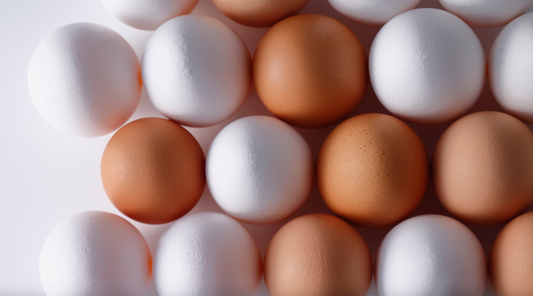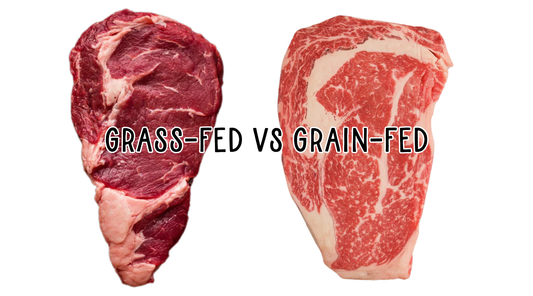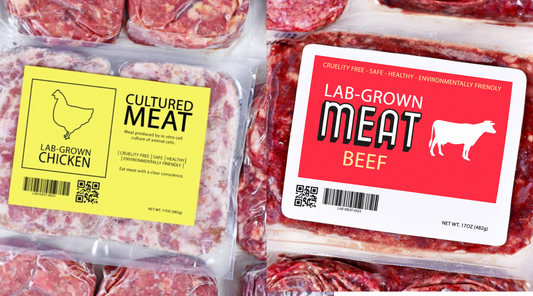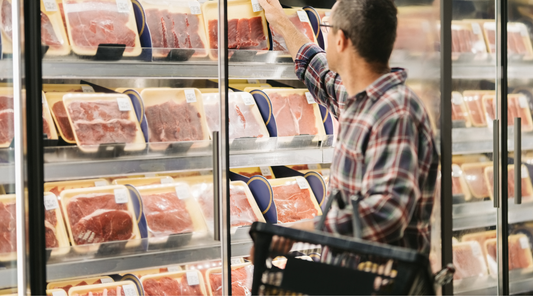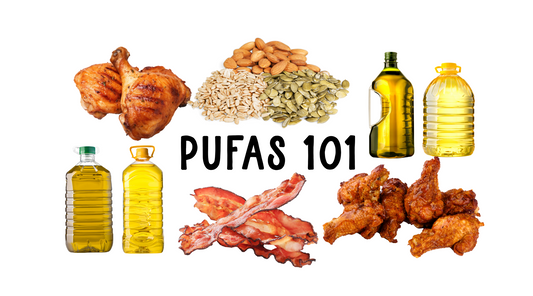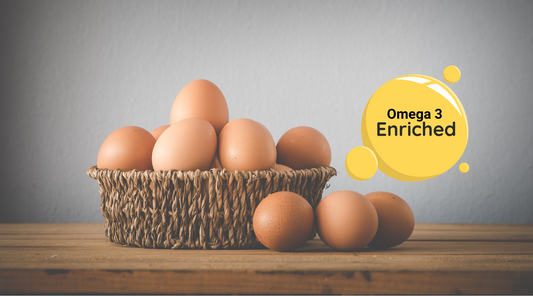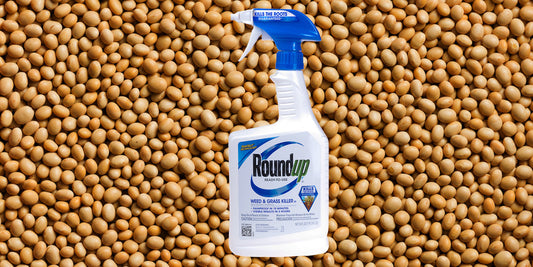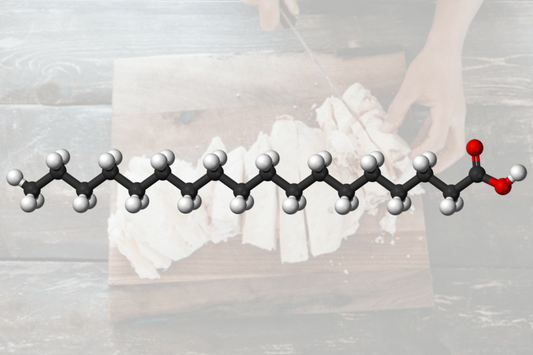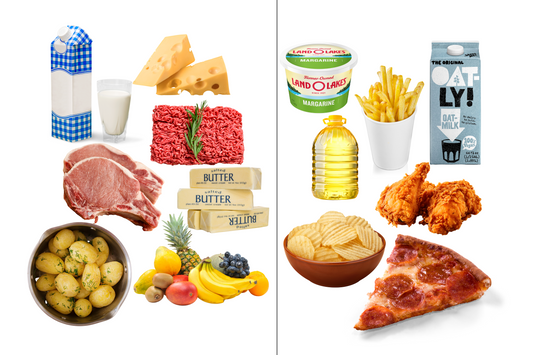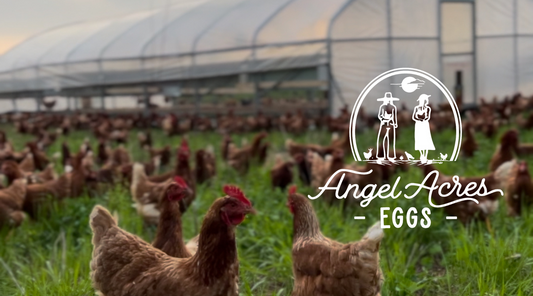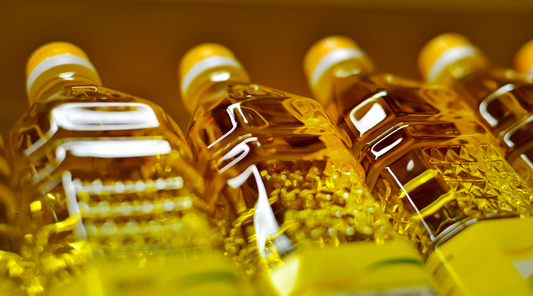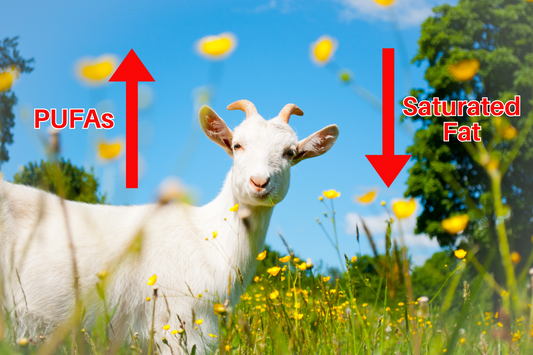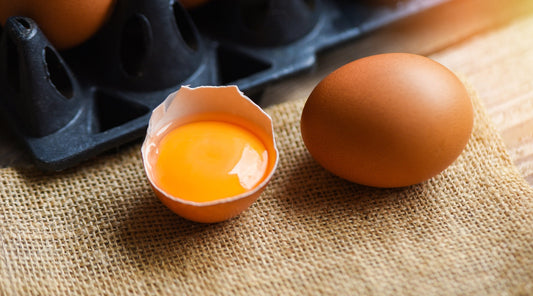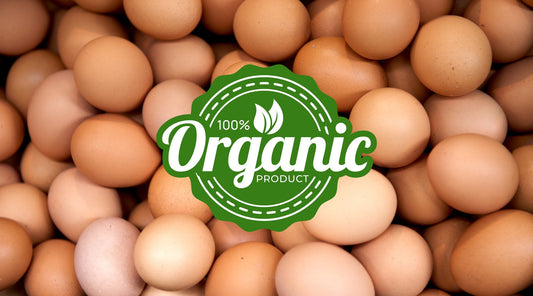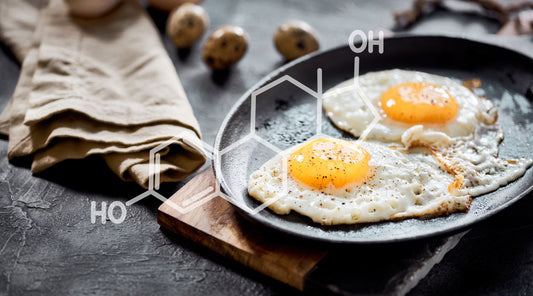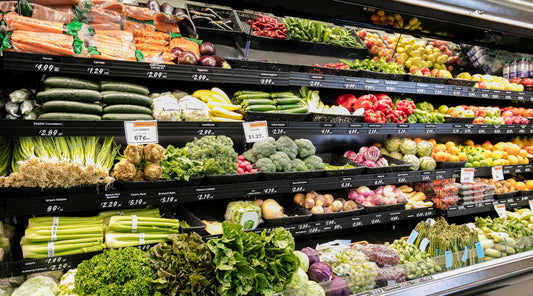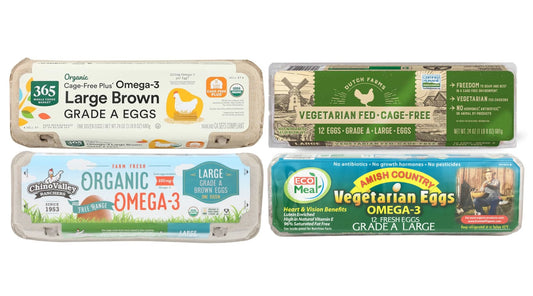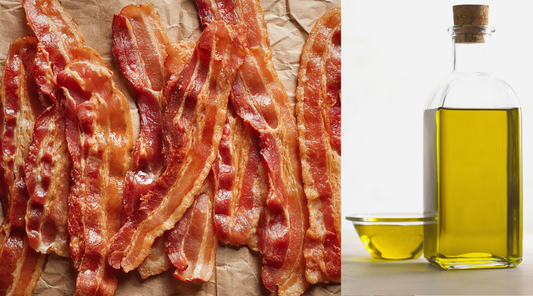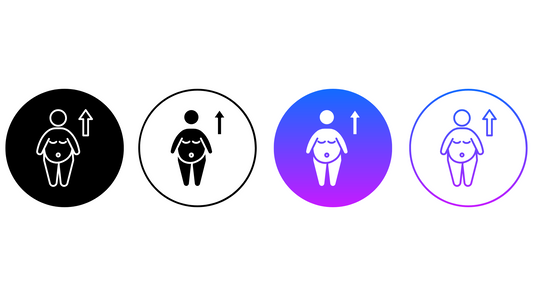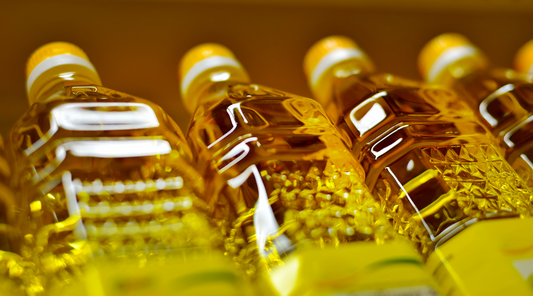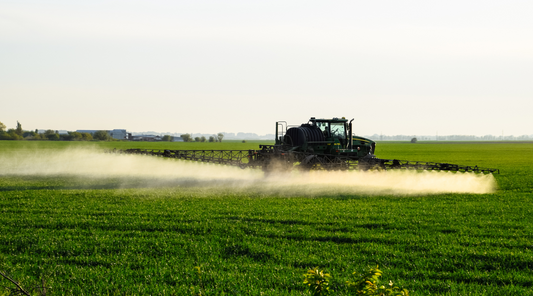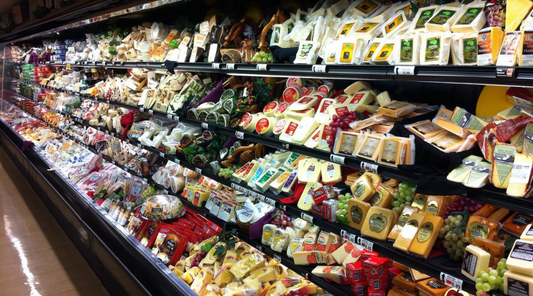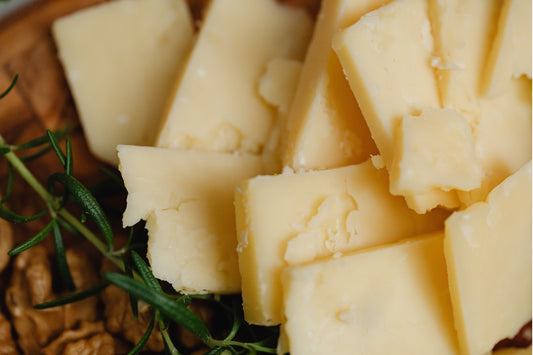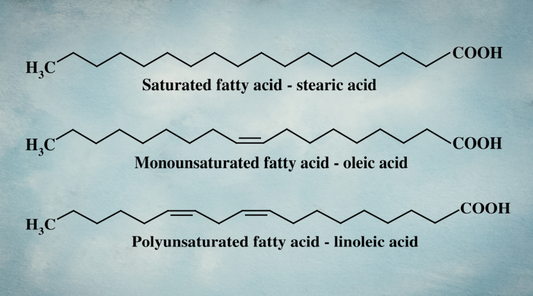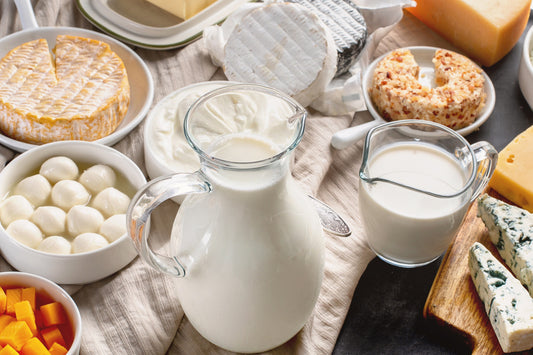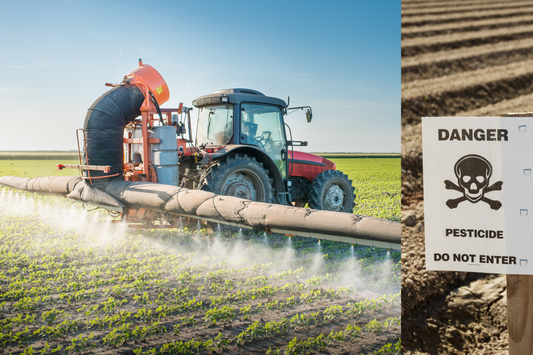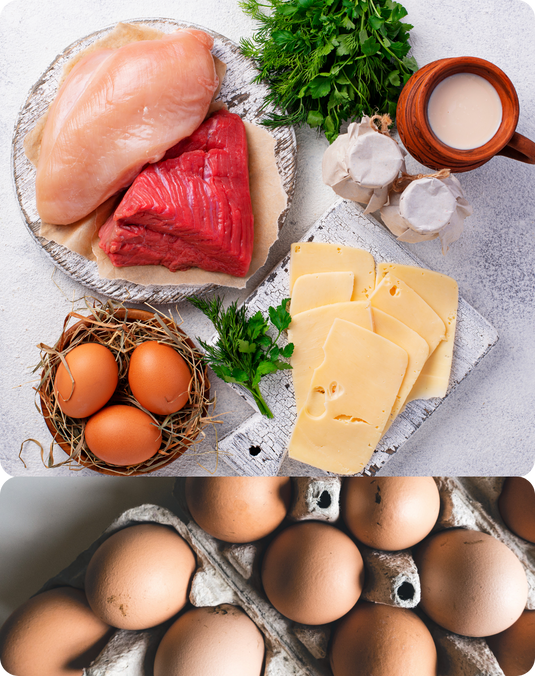
The Hidden Dangers of Omega-3 Enriched Eggs: What the Labels Don’t Tell You
Most people want to make healthy food choices, and marketers know it. That’s why egg cartons today are covered in feel-good labels like “Omega-3 Enriched.”
But these claims, while appealing on the surface, often conceal what’s actually happening behind the scenes: what the chickens are being fed, how that affects the nutrient profile, and what ends up in your body.
So let’s break down why “Omega-3 Eggs” might not be the health upgrade they seem, and why you may want to leave them on the shelf.
First: Where Did the Omega-3 Obsession Come From?
Our ancestors didn’t fixate on omega-3s. They ate whole, seasonal, nutrient-dense foods without reducing food to isolated components. The modern obsession began in the late 20th century, when saturated fat was demonized, and polyunsaturated fats (PUFAs) were divided into “bad” omega-6s and “good” omega-3s.
Rather than addressing the root issue (excessive omega-6 from seed oils, processed foods, and confinement-raised animal products) we were told to “balance the ratio” by consuming more omega-3s. Enter fish oil supplements and Omega-3 fortified everything.
But here’s the truth: our ancestors didn’t need to balance anything. They weren’t bathing in seed oils to begin with. And some research even suggests that the omega-6:omega-3 ratio may not matter as much as we’ve been led to believe.
“In the present study, we found no difference in the levels of inflammatory biomarkers between groups despite a significant difference in omega-6 to omega-3 ratio.” (ref)
The truth is, manipulating the Omega 3 content is trying to outsmart mother nature and produce something that isn’t natural.
The better solution may not be to add more omega-3s, but to cut the excess omega-6s at the source.
What Are “Omega-3 Enriched” Eggs?
Eggs aren’t naturally high in omega-3s. To artificially increase these levels, chickens are fed flaxseed, an industrial plant traditionally used in paint and textiles, not food or animal nutrition.
Feeding chickens flax consistently alters the egg, and not in a good way. Here’s what the research shows:
1. More Plant-Based Omega-3s You Don’t Actually Want
When chickens eat flax to boost the Omega 3 level, the alpha-linolenic acid (ALA), a plant-based omega-3 fat, significantly increases (ref). While ALA sounds good, your body works really hard to get rid of it through various conversions and detox pathways (ref) ... it's not the type of fat your body is designed to store or use efficiently.
In one study, feeding chickens 8% flax raised the ALA in eggs from 0.62% to 5.79% (ref). In comparison, our soy- and flax-free Angel Acres eggs tested at just 0.34%, a natural, healthy level.
Then there is the metabolism piece. Your body changes gene expression based on what fats it sees coming in from your diet.
ALA is also a strong activator of PPAR-alpha (ref), a gene regulator that can disrupt lipid metabolism, increase rates of lipid oxidation, and promote fat storage and insulin resistance. In animal models, ALA has been shown to increase insulin resistance (ref), obesity was reversed by lowering the expression of this very pathway. (ref)
2. Higher Levels of Oxidation (Even Before You Take Your First Bite)
Polyunsaturated fats like ALA are unstable and prone to oxidation because of their biochemical structure. Have you ever seen flaxseed oil (which is high in ALA) at the grocery store? It is always sold in dark bottles to limit the amount of light coming in. When exposed to light, it oxidizes into linseed oil, wood polish! Remember, flax was traditionally used as paint, not food!
Why? Because when exposed to light and air, it rapidly oxidizes… into linseed oil, better known as wood polish. Remember, historically, flax wasn’t a food… it was used as pain and a finish for furniture.
So what happens when we enrich eggs with omega-3s by feeding chickens flax? Studies show they become more vulnerable to oxidative damage: during storage, transport, and even cooking (ref, ref).
Feeding chickens flaxseed reduces the stability of their meat and eggs (ref).
“Flaxseed inclusion as a fat source in a hen’s diet has been found to enhance the LC n-3 PUFA content but causes a significant decrease in the oxidative stability of eggs.” (r)
And oxidation isn’t a harmless process. When unstable PUFAs like ALA oxidize, they don’t just degrade, they produce toxic byproducts such as MDA (malondialdehyde) and 4-HHE (4-hydroxy-2-hexenal). These compounds are biologically active and have been linked to inflammation, cellular damage, and long-term health risks, including cancer, cardiovascular disease, and neurodegenerative disorders (ref, ref).
That means those omega-3-enriched yolks may sound healthy—but they can contain elevated levels of lipid oxidation products that degrade nutrient quality, affect taste, reduce shelf life, and potentially compromise your health.
One study found flax-fed eggs had 400% more lipid oxidation products after 60 days of storage (ref). Another study found a 120% increase in oxidation markers in a much shorter timeframe. (ref)
Importantly, oxidized PUFAs aren’t inert. They continue reacting within the body. In animal studies (ref, ref), diets enriched with oxidized omega-3 fats led to
-
Accumulation of 4-HHE (a toxic aldehyde) in the small intestine
-
Oxidative stress and inflammation in gut tissues
-
Direct damage to the gut lining, even after digestion
And once those eggs are cooked, especially at high temperatures, oxidation can accelerate, further increasing the load of reactive lipid byproducts in your meal.
Image from (ref)
From (ref)
3. Hormone-Disrupting Phytoestrogens
Flax is also one of the richest dietary sources of phytoestrogens, plant compounds that mimic estrogen in the human body. These compounds can bind to estrogen receptors and interfere with hormone signaling (ref), disrupting natural hormonal balance and earning their classification as endocrine disruptors (ref).
When chickens are fed flax, those same estrogen-mimicking compounds end up in their eggs (ref, ref, ref) Research shows phytoestrogen levels in eggs can increase by more than 300% when flax is added to the feed (ref), which means you’re ingesting them too.
While many people are focused on avoiding plastics or pesticides, few realize that one of the most overlooked sources of hormone disruption may be coming from our food, specifically, what our food eats. And today, due to widespread use of soy and flax in livestock feed, our exposure to phytoestrogens and endocrine disruptors is higher than ever before in human history. Many are raising serious concerns about this chronic, cumulative exposure to phytoestrogens (ref, ref).
Even if the levels in eggs and meat are lower than eating soy or flax directly, these animal foods are often eaten daily, making consistent low-dose exposure the real issue over time.
Want to dive deeper into how phytoestrogens are ending up in our meat, milk, and eggs— and what the science says about their impact on hormonal health? I break it all down in this [blog post].
The good news? You can reduce your exposure. At Angel Acres, our hens are raised on a custom soy- and flax-free diet, and we don’t just claim it, we verify it through testing. Our eggs contain virtually no detectable phytoestrogens, offering a safer, genuinely nourishing alternative in a world where hormonal disruption is becoming the norm.
Eggs don’t have to be a source of endocrine disruption… so let’s stop making them one.
Negative impact on chicken health
Feeding chickens flax-based, omega-3-rich diets has been shown to worsen coccidial infections (ref), likely due to oxidative byproducts from PUFA breakdown damaging the gut lining. These byproducts intensify intestinal lesions through increased oxidative stress and inflammation.
Flax consumption doesn’t just affect gut health, it also increases oxidative stress throughout the bird’s body. Studies have documented elevated lipid peroxidation and oxidative damage in chicken tissues, especially in the liver and various muscles (ref, ref). In layers fed extruded flaxseed, researchers observed significant rises in liver enzymes (ALT and AST) along with increased levels of malondialdehyde (MDA) (ref), a toxic marker of lipid oxidation.
And of course this matters to you, too. With more oxidative stress, the quality of the meat and eggs decline. Products from flax-fed birds are more prone to oxidation, meaning shorter shelf life, off-flavors, reduced nutrient integrity, and ultimately, a less nourishing food source (ref).
The Better Choice: Let Nature Lead
Eggs aren’t naturally high in omega-3s, and forcing them to be can come with unintended consequences.
Instead of artificially manipulating the fatty acid profile of animal products, we believe in returning to nature with more ancestral and traditional diets, allowing eggs to maintain their natural, stable fat composition, the way they were always meant to be.
At Angel Acres, our chickens are never fed soy, flax, seed oils, or industrial byproducts. We crafted our own custom feed to reduce PUFAs (to lower oxidation) and eliminate phytoestrogens. And we don’t just guess, we test.
Our latest lab results confirm it:
-
94% less ALA than flax-fed commercial eggs
-
74% less LA (an omega 6 PUFA) relative to Organic Pasture Raised
-
Virtually no detectable phytoestrogens
-
Zero glyphosate
Eggs should be a metabolic and hormonal ally, not a hidden source of inflammation, oxidation, and hormone disruption.
So if you’re looking for eggs that nourish your body and support your health the way nature intended, we’d be honored to feed your family.





